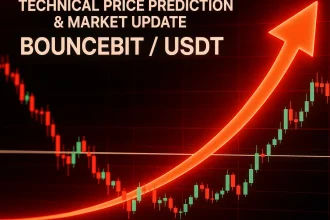In recent years, the global financial landscape has undergone a seismic shift, with cryptocurrencies transitioning from niche digital novelties to mainstream financial instruments. This evolution has been marked by significant milestones, including the United States government’s establishment of the Strategic Bitcoin Reserve and the Digital Asset Stockpile. These initiatives signal a profound transformation in how nations perceive and integrate digital assets into their economic frameworks.
Governmental Adoption: A Paradigm Shift
The creation of the Strategic Bitcoin Reserve by the U.S. Treasury, utilizing forfeited bitcoins, represents a bold move towards legitimizing and institutionalizing cryptocurrency within national reserves. As of August 2025, the United States holds approximately 198,000 BTC, positioning it as the largest known state holder of bitcoin globally. This strategic accumulation underscores a recognition of bitcoin’s potential as a hedge against traditional economic fluctuations and a tool for diversifying national assets.
Furthermore, the Digital Asset Stockpile extends this approach by incorporating a variety of cryptocurrencies, including Solana (SOL), Cardano (ADA), Ripple (XRP), Ethereum (ETH), and Bitcoin (BTC). This diversified portfolio reflects a comprehensive strategy to embrace the broader digital asset ecosystem, acknowledging the unique value propositions and technological innovations each cryptocurrency offers.
Regulatory Evolution: Facilitating Integration
Complementing these asset acquisitions, the U.S. Securities and Exchange Commission (SEC) has embarked on a significant regulatory overhaul. The approval of new listing rules for spot cryptocurrency exchange-traded funds (ETFs) on September 18, 2025, streamlines the approval process, reducing the timeline from up to 240 days to as little as 75 days. This regulatory shift not only facilitates the introduction of ETFs tied to cryptocurrencies like Solana and XRP but also reflects a broader commitment to integrating digital assets into traditional financial markets.
Additionally, the SEC’s agenda to revamp cryptocurrency regulations and ease certain Wall Street compliance rules indicates a proactive approach to fostering innovation while ensuring investor protection. By defining the offer and sale of digital assets and considering exemptions and safe harbors, the SEC aims to provide clarity and stability in the rapidly evolving crypto landscape.
Market Implications: Institutional Confidence and Economic Resilience
The U.S. government’s proactive stance has instilled a sense of confidence among institutional investors. Citigroup’s projection of a year-end price target of $4,300 for Ethereum, attributed to heightened investor interest and growing adoption of Ethereum-based applications, exemplifies this trend. Such forecasts suggest a burgeoning recognition of cryptocurrencies’ intrinsic value and their potential to contribute to economic resilience.
Moreover, the establishment of national cryptocurrency reserves and the facilitation of crypto-based financial products signal to the global market that digital assets are not only viable but essential components of a diversified economic strategy. This institutional endorsement is likely to spur further adoption, innovation, and integration of cryptocurrencies into various sectors of the economy.
Conclusion: Embracing the Future of Finance
The United States’ strategic initiatives to incorporate cryptocurrencies into its national reserves and financial systems mark a pivotal moment in the evolution of global finance. By recognizing and harnessing the potential of digital assets, the nation positions itself at the forefront of financial innovation, setting a precedent for others to follow. As we stand on the cusp of this new era, it is imperative for policymakers, investors, and the public to embrace the opportunities presented by cryptocurrencies, ensuring a resilient and dynamic economic future.






